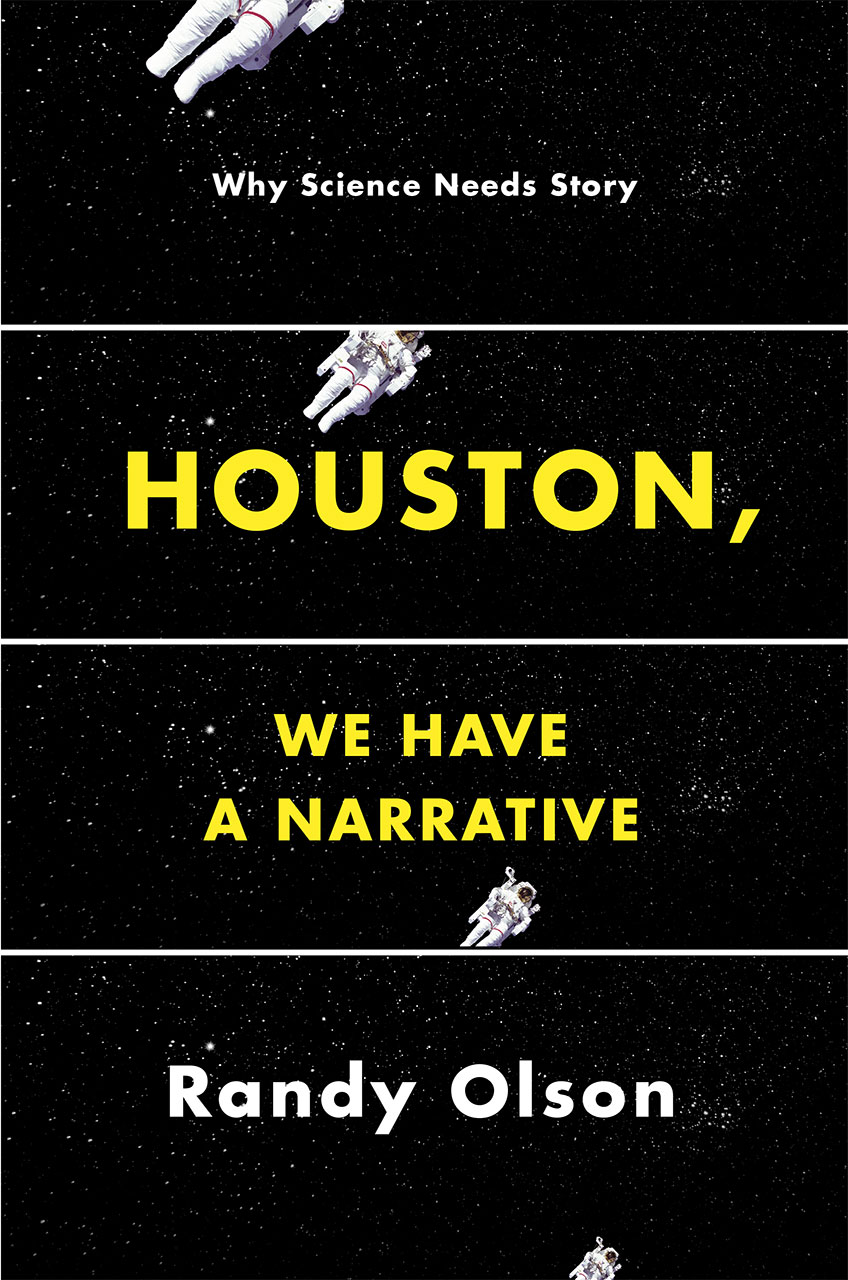
Part 3 of Randy Olson's Houston, We Have a Narrative: Why Science Needs Story is not the longest part of the book, but it's the most difficult to summarize. Part 2, while much longer, concentrated on three methods for making research into story. This chapter is more disjointed and goes in a few different directions.
What does "story" mean?
Olson begins by defining the term he used throughout the entire book: story.I define "a narrative" or "a story" as "a series of events that happen along the way in the search for a solution to a problem."
This then means a "storyteller" is just someone who recounts the series of events that happened along the way in the search for a solution to a problem.
Why are scientists so hesitant or afraid to use stories? Because they think they are untruths. But with Olson's definition, they aren't. They're just retelling events. But it isn't just a list of facts. That's not a story. It is only, well, a list of facts. The AAA (and, and, and) method is not actually a story because there is no problem.
McKee's Triangle
Olson relates this to Robert McKee's Triangle of archplot, miniplot, and antiplot. Antiplot is the stuff where nothing happens. There's not even a narrative.In a miniplot, nothing much happens, but there's always good acting and character development. Archplot is the stuff Olson has been talking about. There's a real problem with a protagonist and antagonist, and the protagonist has to save the day. And everything's pretty linear.
Archplot is the ABT method (that's and, but, therefore for those that don't remember from last time). But archplot must have a positive result. The research proved that something is true. Miniplot is the stuff of null results. Not much happens, but you have to know the information anyway. And the AAA method of listing facts is the antiplot. Nothing happens. At all. It just keeps going with a bunch of images.
The Global Warming Miniplot
This archplot, miniplot, and antiplot metaphor explains why global warming has such problems. There's not a clear cause. Events in the weather patterns appear random. There isn't a single protagonist or antagonist. But most importantly, there isn't a closed ending. Do we try to stop it or is it too late, but we should mitigate it, or do we have to try to learn to live with it?For Olson, global warming is a "miniplot mess." Just like Al Gore's An Inconvenient Truth. An important movie, certainly, but not something that we return to again and again. It's just not that exciting.
But imagine this:
Once upon a time on a small blue plant there was an atmospheric crisis that threatened all of humanity [ozone hole] AND by the early 1980s the problem seemed dire, BUT then the nations of the world came together and passed a treaty, THEREFORE today that problem is set to go away...
BUT THEN a second atmospheric problem emerged in the late 1980s (global warming) and those same nations that solved the ozone problem have been unable to solve this problem. WHY IS THAT?
And then it goes into its plot. Why haven't the countries of the world been able to solve this problem? That would be an archplot.
Conclusion: Buy this book
Olson wants scientists to form groups to tell their stories so that they can build their narrative intuition. It's a good goal, but it's hard to do. Trust me. I've tried.But Olson's book is a good start. It has definitely made me want to continue reading about stories. I think I need to read Olson again, though.
This really is a book that can be returned to again and again. Not only to learn but to enjoy. The writing here is better than in Don't Be SUCH a Scientist, and the stories may be more fun.
Remember: if there is a book that you would like for us to summarize, send us a note.
